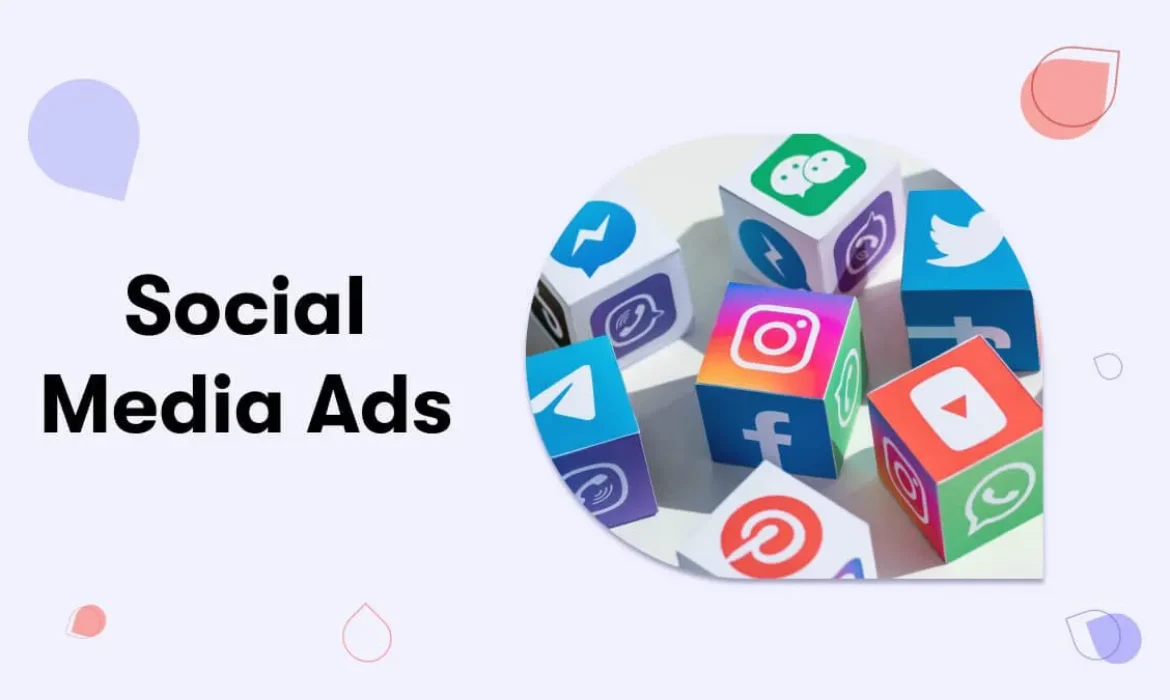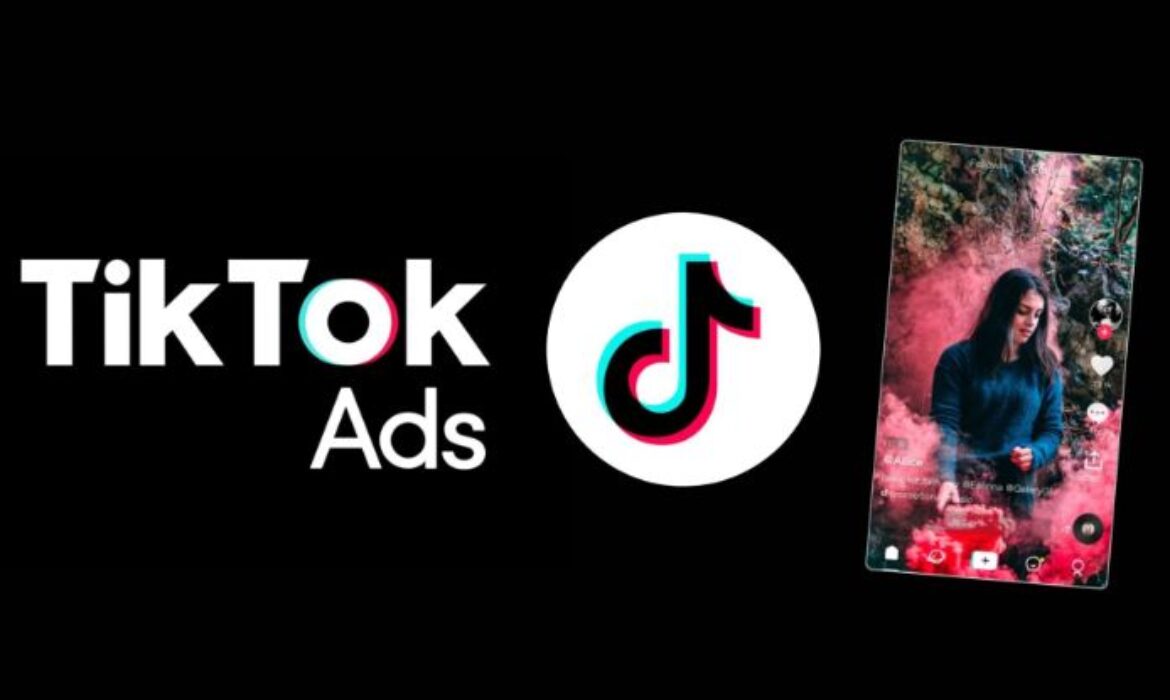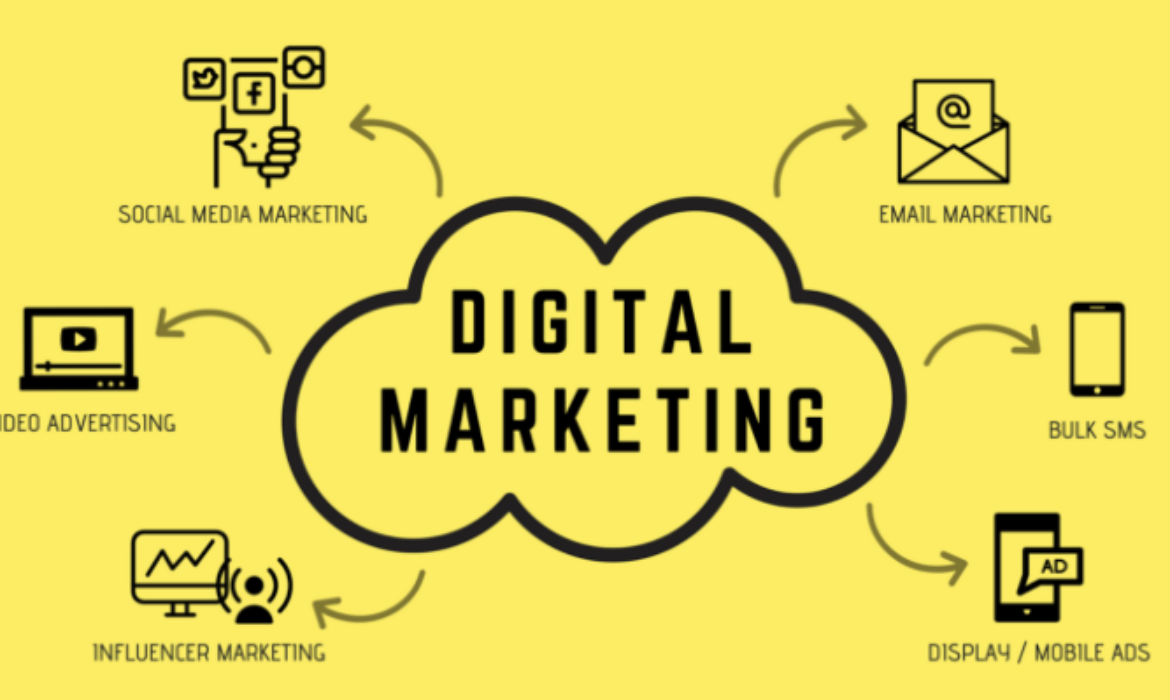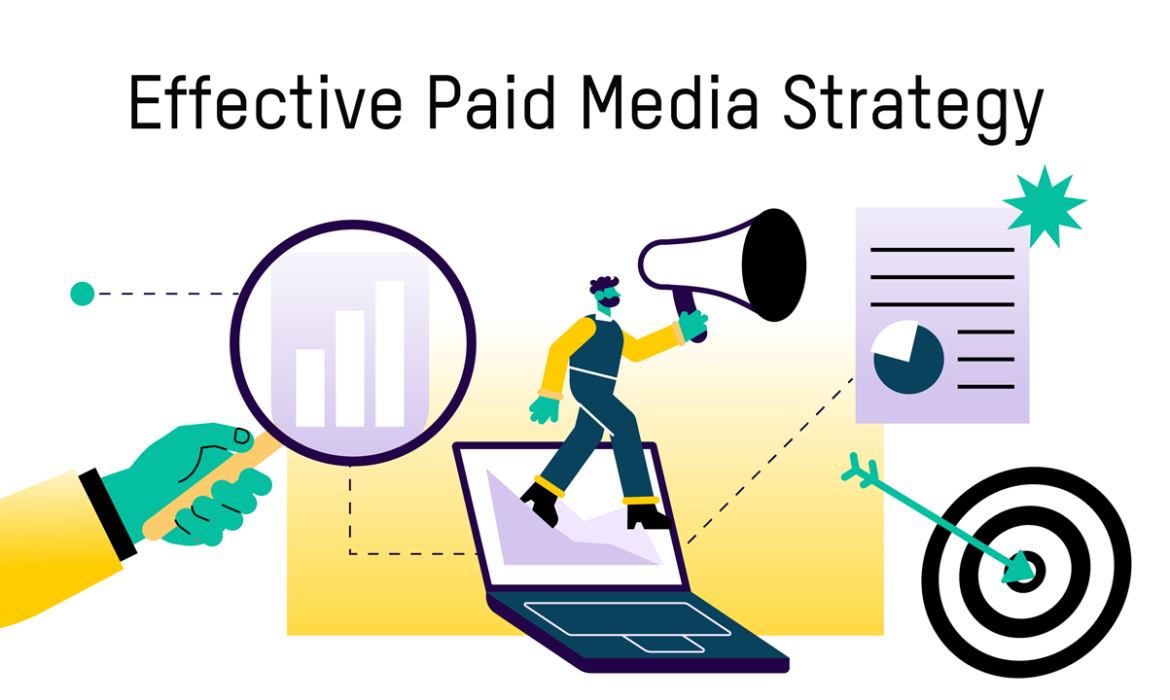Elevate YouTube Subscribers with Paid Media Power
YouTube is the best platform for creators to share their knowledge, interact with audiences globally, and display their talent in the huge digital realm where content is king. With more than 2 billion monthly active viewers, YouTube subscribers present an unrivalled chance for content creators to establish their brand, connect with new fans, and make money off of their work. But with millions of videos submitted every day, it can be difficult to stand out and get subscribers. This is where carefully considered paid media use enters the picture, giving producers an effective instrument to boost their reach and quicken their rate of growth. Dive into the world of sponsored media in this blog article and examine how it can help dramatically increase the number of YouTube followers.
Recognizing Paid Media
Any type of advertising or marketing that a company or individual pays for to reach a specific audience is referred to as paid media. By paying for visibility, artists can amplify their content through sponsored media, as opposed to earned or owned media, which depends on organic reach and engagement. This can be done in several ways, such as social media advertising, influencer relationships, sponsored content, and display advertising.
The Influence of YouTube Viewers
Before delving into the complexities of sponsored content, it is imperative to comprehend the significance of YouTube subscribers for content producers. A devoted fan base that consciously chooses to receive updates and notifications about the most recent material is represented by subscribers. In contrast to casual viewers who could find videos through recommendations or search results, subscribers are more likely to regularly interact with material by leaving comments, liking it, and sharing it with their social media networks. Furthermore, having a large number of subscribers improves the legitimacy of the channel and raises the possibility that it will be able to make money from sponsorships, advertisements, and product sales.
Using Paid Advertising to Increase Subscribers
Now that the value of YouTube subscribers has been established, look at how paid media might assist in drawing and keeping them.
1. Specialized Marketing Initiatives
IT can design highly targeted advertising strategies using paid media that are specifically designed to reach the intended audience. Sophisticated targeting options based on demographics, hobbies, keywords, and browsing behaviour are available on platforms like Google Ads and YouTube Ads. Users that are most likely to interact with content and subscribe to channels can be reached by carefully selecting the target audience and creating engaging ad creatives.
2. Working Together with Influencers
Influencer marketing has grown to be an effective strategy for expanding a brand’s audience and growing a creator’s subscription base. Collaborating with influencers who share a vision or sector can help the channel reach a wider audience and give the material more legitimacy. Utilizing influencers’ reach through sponsored videos, shoutouts, or partnerships can have a big impact on subscriber count.
3. Cooperations and Cross-Promotions
Another great strategy to take advantage of paid media is to collaborate and cross-promote with other creators in the area. Through guest posting on other channels or showcasing other producers in their videos, IT can reach each other’s viewership and draw in new subscribers. Taking part in collaborative giveaways or challenges can also increase viewer excitement and engagement, which will increase the number of subscribers
It takes more than simply excellent video creation to become a profitable YouTube channel in the cutthroat digital market of today. With paid media, creators have access to an extensive toolkit of strategies and techniques that help them expand their audience, gain new followers, and increase their reach. Through influencer relationships, sponsored content, cross-promotions, or targeted advertising campaigns, it may accomplish growth goals and stand out in a crowded market by strategically utilizing paid media. It may realize YouTube subscribers’ full potential and start down the path to success and sustainability by tracking progress and making good use of paid media.
Unleashing the Power of Social Media Ads for Maximized ROI
Social media advertising is a potent tool available to organizations in the digital age when billions of individuals use social media platforms every day. Social media ads have completely changed how businesses interact with customers and generate revenue because of their capacity to accurately target audiences, track performance, and adjust campaigns in real-time. We’ll go into the specifics of social media advertising in this blog article, including its advantages, best practices, and how to use it to increase return on investment (ROI).
Recognizing Social Media Advertisements
Paid promotional content on social media sites like Facebook, Instagram, Twitter, LinkedIn, Pinterest, and Snapchat is referred to as social media advertising. These advertisements are positioned carefully in users’ feeds or stories and might be in the form of text, photos, videos, carousels, or slideshows.
Social Advertising’s Advantages
Precise Targeting: The ability to target particular demographics, interests, behaviours, and even custom audiences is one of the biggest benefits of social media ad marketing. By ensuring that advertising is viewed by the most relevant audience, precision targeting raises the possibility of engagement and conversion
Enhanced Brand Awareness: Social media advertisements help companies instantly contact a large audience, which raises awareness and visibility of their brands. It can remain at the top of consumers’ minds and build credibility in the field by exposing people to brand messages regularly.
The Best Methods for Social Media Promotion:
Establish Specific Goals: Whether the goal is to raise brand awareness, increase website traffic, generate leads, or increase sales, make sure to have objectives in place before initiating a social media advertising campaign. Setting specific objectives can help gauge the effectiveness of efforts and direct strategy.
Set Specific Objectives: Before starting a social media ads campaign, make sure have objectives in place. Goals may include increasing website traffic, sales, leads, or brand awareness. It may better approach and assess the success of efforts by establishing clear objectives.
Captivating copy and images: In a crowded social media space, engaging copy and images are crucial for drawing consumers in and increasing interaction. Invest in premium pictures, films, or other visuals that highlight the benefits of goods or services, and write clear, attention-grabbing content that conveys points.
Using Social Media Advertising to Get the Most Return:
Establish Target Audience: Begin by determining the characteristics, hobbies, habits, and preferences of the target audience. Utilize the sophisticated targeting features of social media advertising platforms to connect with the most pertinent audience segments for the company.
Select the appropriate platform: Choose the social media channels that best serve the target market and corporate goals. For example, LinkedIn might be a better fit if targeting professionals and B2B audiences, but visually attractive brands might have more success on Instagram or Pinterest
Create Eye-Catching Ad Creatives: Craft eye-catching ad creatives that grab users’ attention and convey business messages. Make use of captivating photos, videos, or graphics along with persuasive language that emphasizes the special value proposition of a good or service.
Optimize landing sites: Make sure the sites that lead to social media advertisements are designed to encourage conversions. To motivate users to perform the required action, integrate unambiguous call-to-actions (CTAs), expedite the conversion process, and maintain messaging consistency with the creative of the advertisement.
Iterate and Improve: The process of social media advertising is iterative, and optimizing return on investment requires constant improvement. Over time, improve advertising campaigns, test out new tactics, and hone strategy based on the insights gleaned from user feedback and performance statistics.
Businesses have never-before-seen opportunities to reach and interact with their target audience through social media ads, create real connections, and accomplish their marketing goals. Businesses may fully realize the potential of social media advertising and optimize their return on investment by comprehending the nuances of social media marketing, following best practices, and utilizing data-driven insights. In today’s digital world, social media advertisements may help any size of business, from startups to multinationals, reach new heights with their brand.
Maximizing SEO strategies with TikTok Ads
Paid methods have become essential tools for organizations looking to improve their online presence and deliver targeted traffic to their websites in the ever-changing world of digital marketing. With so many advertising channels at their disposal, TikTok Ads have attracted a lot of attention due to their unmatched interaction and reach with younger audiences. -Explore the world of SEO-paid techniques in this in-depth guide, with an emphasis on using it to open up new growth and exposure opportunities
Recognizing the Influence of TikTok Advertising
Getting Millennials and Generation Z to Pay Attention:
- With younger viewers in particular, TikTok has become one of the most widely used social media platforms very quickly.
- TikTok ads provide advertisers with a distinctive chance to engage and authentically connect with Gen Z and millennial populations through its short-form video format and algorithm-driven content discovery.
Taking Advantage of TikTok’s Viral Potential:
- TikTok’s algorithm favours material according to engagement metrics, which facilitates the quick dissemination of viral videos.
Businesses may use TikTok’s viral potential to increase brand awareness and reach a larger audience by creating engaging and shareable content.
TikTok Ads Integration with SEO Paid Strategies:
Making Captivating Advertising Campaigns:
- To build engaging and dynamic ad experiences, make use of TikTok’s native ad formats, which include in-feed advertisements, branded hashtag challenges, and branded effects.
- Ad creatives should be tailored to appeal to TikTok’s vibrant and artistic community, emphasizing relatability, humour, and authenticity to draw in viewers.
Selecting Appropriate Audiences:
- Make use of TikTok’s extensive targeting tools to target audiences that fit particular demographics, interests, and habits.
- To improve audience targeting and increase ad relevance, use bespoke audience segments, lookalike audiences, and interest-based targeting.
- Making the Most of Influencer Partnerships
Work together with TikTok influencers to increase advertising campaigns’ effect and reach.
Find influencers whose work speaks to the target market and brand values, and work with them to produce sponsored content.
Analyzing and Improving Ad Campaigns on TikTok:
Monitoring Crucial Performance Measures:
- To evaluate the success of TikTok ad campaigns, track key performance indicators (KPIs), including impressions, click-through rates (CTR), conversion rates, and return on ad spend (ROAS).
- Make use of TikTok’s ad analytics dashboard to learn more about the effectiveness of campaigns and pinpoint areas that could use improvement.
Analyzing and Improving Ad Campaigns on TikTok:
To evaluate the success of TikTok ad campaigns, track key performance indicators (KPIs), including impressions, click-through rates (CTR), conversion rates, and return on ad spend (ROAS).
Make use of TikTok’s ad analytics dashboard to learn more about the effectiveness of campaigns and pinpoint areas that could use improvement.
TikTok Ads present a singular and alluring option for businesses to improve their online exposure, interact with younger consumers, and produce significant outcomes in the field of SEO-paid techniques. Businesses can open up new growth channels and get a competitive edge in the digital market by utilizing TikTok’s dynamic platform and putting strategic ad campaigns in place. Use this article as a road map to successfully integrate it into SEO-paid campaigns and grow the company to new heights of success and visibility.
Mastering Link Outreach Strategy for High-Quality Backlinks
Within the ever-evolving field of search engine optimization (SEO), link outreach is a fundamental tactic used to increase website visibility and authority. Learning the art of it is crucial for companies looking to rank highly on search engine results pages (SERPs) and attract natural visitors to their websites as the digital landscape changes.
Why Link Outreach is Important:
The proactive process of contacting relevant websites or people to obtain backlinks to your website is commonly known as link building. By serving as virtual testimonials, these backlinks let search engines know how reliable and pertinent your material is. In addition to increasing referral traffic, high-quality backlinks have a big impact on your website’s authority and SERP rating.
Recognizing the Value of High-Quality Backlinks:
Not every backlink is created equal in the dynamic world of search engine optimization (SEO). Backlink construction is an area where quality matters more than quantity. Google, in particular, gives preference to backlinks coming from reliable and pertinent sites. Many backlinks from unrelated or low-quality directories may not have the same authority as one backlink from a respectable website in your niche.
Developing a Successful Link Promotion Plan:
Determine your goals and target audience:
Identify the people that make up your target market and the particular websites or platforms they use.
Set specific objectives for your link outreach effort, such as raising brand awareness, boosting search engine ranks, or generating referral traffic.
Make extensive research:
Analyze competitor backlinks, industry influencers, and pertinent online forums to find possible link opportunities.
Give top priority to websites with a large viewership, relevant content for your niche, and strong domain authority.
Customize Your Outreach
Create engaging outreach emails that are personalized for each recipient, mentioning them by name and displaying a sincere interest in their information.
Stress the advantages of working together and how providing a connection to your website would help their audience.
Provide High-Value content:
Provide insightful, well-written material that is a great resource for people in your niche.
Make it easy for others to link to your content by framing it as a remedy for problems that your target audience faces regularly.
Strategically Follow Up:
Establish a methodical follow-up procedure to guarantee the highest levels of participation and reaction.
Remind recipients politely of your first pitch, highlighting the advantages of working together and the value proposition.
Top Strategies for Effective Link Promotion:
Preserve Transparency:
When pursuing backlinks, be truthful and open about your goals. Steer clear of manipulative or deceitful methods that can damage your reputation.
Encourage sincere bonds.
Develop deep connections with influential people and website owners in your niche. Mutual support and long-term linkage opportunities might result from networking and teamwork.
Embrace Variety in Your Link Profile:
To build a natural and well-balanced link profile, look for a variety of backlink sources, such as industry magazines, reference pages, guest blogging, and niche directories.
Track and assess results:
Using analytics tools and metrics like referral traffic, domain authority, and search engine results pages (SERPs), continuously monitor and evaluate the outcomes of your outreach program for links. To optimize results, adjust your plan based on the knowledge you have gained.
Gaining proficiency in link outreach is crucial to improving a website’s exposure, authority, and organic traffic in the always-changing world of search engine optimization. By putting quality above quantity, developing tailored outreach plans, and developing real connections in your industry, you can fully realize the potential of link-building to take your SEO efforts to the next level. Accept the guidelines and best practices in this article to get started on the path to long-term SEO success with efficient link building.
Unveiling the Power of Strategic Content in Content Marketing
One phrase that keeps becoming more and more common in the constantly changing field of digital marketing is “strategic content.” Companies of all sizes are increasingly understanding how important it is to develop content strategies that complement their overarching marketing objectives rather than merely producing content for the sake of it.
Content Marketing Success Requires a Solid Understanding of Sustainable Content
Fundamentally, it is produced and disseminated to draw in and hold on to a certain audience. It is valuable, pertinent, and consistent material. In contrast to random content creation, it is carefully prepared to fulfil particular objectives within an all-encompassing marketing strategy.
The Strategic Content Pillars
Understand the audience:
It’s critical to have a thorough understanding of the target audience before producing any content. To determine their requirements, problems, preferences, and behaviours, do an in-depth study. Setting Goals: Each piece of content needs to have a clear intention behind it. Make sure every piece of content is in line with clear, quantifiable objectives, whether they are to raise brand awareness, improve website traffic, produce leads, or increase sales.
Keyword Research:
The foundation of SEO-driven content marketing is keywords. To find pertinent terms and phrases that the audience is searching for, do some keyword research. To improve the visibility of content in search engine results, strategically use these keywords in the article.
Content Planning:
Create a content calendar that lists the subjects, forms, and media outlets you will be covering. By doing this, you can maintain consistency and organization in the creation and release of material on a timetable.
High-quality content creation:
Put energy into producing information that genuinely benefits the audience. Focus on content above design when creating blog articles, videos, infographics, or podcasts, and strive to position the business as a reliable authority in the industry.
Optimized Distribution:
Making sure content reaches the target audience is just as important as simply producing excellent content. To increase the reach of material, use a variety of distribution methods, including influencer collaborations, email newsletters, social media, and guest blogging.
How to Include Sustainable Content in a Marketing Plan
After outlining the fundamental components of it, let’s examine how to effectively include it in the entire marketing plan.
Sync with business objectives:
Make sure that the content strategy closely relates to overarching business goals. The material should directly assist these objectives, whether they be growing a customer base, introducing a new product, or boosting sales.
Personalization:
To make content more relevant to certain audience segments, use data-driven insights. Make sure that content formats, tone, and messaging are appropriate for each audience segment’s unique requirements and preferences.
Lead nurturing:
Throughout the buyer’s journey, use thoughtful content to develop leads. Help prospects make a seamless transition from awareness-stage material that informs them about their issues to consideration-stage content that showcases solutions.
Thought Leadership:
Establish the company’s reputation in the sector by producing intelligent and provocative content. Provide the audience with knowledge, industry insights, and distinctive viewpoints to build authority and trust.
SEO Integration:
To increase the exposure of the website in search engine results, combine an SEO strategy with smart content. Improve the overall SEO performance of the website, obtain backlinks from reputable sites, and optimize content for relevant keywords.
Social Engagement:
Promote genuine connections with followers on social media sites by posting insightful content, answering messages and comments right away, and taking part in pertinent conversations. Engaging with social media not only makes the brand more visible but also fosters follower loyalty and trust.
Iterative Optimization:
Keep an eye on how well the material is performing at all times, and adjust as necessary.
Strategic content has become essential to content marketing strategies that are successful in the cutthroat digital environment of today. You can use content to propel a company toward measurable outcomes by knowing the audience, establishing clear objectives, producing excellent content, and maximizing its dissemination.
Mastering Link Outreach Strategy for High-Quality Backlinks
Within the ever-evolving field of search engine optimization (SEO), link outreach is a fundamental tactic used to increase website visibility and authority. Learning the art of it is crucial for companies looking to rank highly on search engine results pages (SERPs) and attract natural visitors to their websites as the digital landscape changes.
Why Link Outreach is Important:
The proactive process of contacting relevant websites or people to obtain backlinks to your own website is commonly known as link building. By serving as virtual testimonials, these backlinks let search engines know how reliable and pertinent your material is. In addition to increasing referral traffic, high-quality backlinks have a big impact on your website’s authority and SERP rating.
Recognizing the Value of High-Quality Backlinks:
Not every backlink is created equal in the dynamic world of search engine optimization (SEO). Backlink construction is an area where quality matters more than quantity. Google, in particular, gives preference to backlinks coming from reliable and pertinent sites. Many backlinks from unrelated or low-quality directories may not have the same authority as one backlink from a respectable website in your niche.
Developing a Successful Link Promotion Plan:
Determine your goals and target audience:
Identify the people that make up your target market and the particular websites or platforms they use.
Set specific objectives for your link outreach effort, such as raising brand awareness, boosting search engine ranks, or generating referral traffic.
Make extensive research:
Analyze competitor backlinks, industry influencers, and pertinent online forums to find possible link opportunities.
Give top priority to websites with a large viewership, relevant content for your niche, and strong domain authority.
Customize Your Outreach
Create engaging outreach emails that are personalized for each recipient, mentioning them by name and displaying a sincere interest in their information.
Stress the advantages of working together and how providing a connection to your website would help their audience.
Provide High-Value content:
Provide insightful, well-written material that is a great resource for people in your niche.
Make it easy for others to link to your content by framing it as a remedy for problems that your target audience faces regularly.
Strategically Follow Up:
Establish a methodical follow-up procedure to guarantee the highest levels of participation and reaction.
Remind recipients politely of your first pitch, highlighting the advantages of working together and the value proposition.
Top Strategies for Effective Link Promotion:
Preserve Transparency:
When pursuing backlinks, be truthful and open about your goals. Steer clear of manipulative or deceitful methods that can damage your reputation.
Encourage sincere Bonds:
Develop deep connections with influential people and website owners in your niche. Mutual support and long-term linkage opportunities might result from networking and teamwork.
Embrace Variety in Your Link Profile:
To build a natural and well-balanced link profile, look for a variety of backlink sources, such as industry magazines, reference pages, guest blogging, and niche directories.
Track and Assess Results:
Using analytics tools and metrics like referral traffic, domain authority, and search engine results pages (SERPs), continuously monitor and evaluate the outcomes of your outreach program for links. To optimize results, adjust your plan based on the knowledge you have gained.
Gaining proficiency in link outreach is crucial to improving a website’s exposure, authority, and organic traffic in the always-changing world of search engine optimization. By putting quality above quantity, developing tailored outreach plans, and developing real connections in your industry, you can fully realize the potential of link-building to take your SEO efforts to the next level. Accept the guidelines and best practices in this article to get started on the path to long-term SEO success with efficient link building.
Mastering the Art of Targeting Ads in Digital Marketing
Staying ahead of the curve is crucial for organisations looking to effectively reach their target audience in the ever-changing world of digital marketing. Targeting ads stand out among the many tactics as an effective means of reaching the appropriate customers at the right time. We’ll dive into the nuances of digital marketing for targeted ads in this extensive tutorial, examining its importance, tactics, and best practices to maximize your campaigns.
Comprehending Targeted Advertising
Marketing campaigns that are tailored to particular demographics, hobbies, habits, or other characteristics that correspond with a brand’s ideal client profile are known as targeted advertising. Targeted advertisements concentrate on presenting tailored messages to demographics most likely to interact with them, in contrast to traditional advertising, which aims to reach a large audience. This strategy improves the ads relevancy while also raising the chance of conversion, which raises the return on investment (ROI).
Targeted advertisements’ importance in digital marketing
Relevance is crucial in the digital environment we live in, as customers are constantly exposed to marketing messages. Businesses may produce content that connects with their audience and stands out from the crowd by using targeted advertising. Marketers may optimize ad spend and enhance overall campaign performance by identifying consumers who are more likely to be interested in their products or services by utilizing data analytics and consumer insights.
Techniques for Successful Targeted Advertising
- Audience Segmentation: Using demographics, interests, past purchases, and other pertinent factors, break up your target audience into discrete groups. Because of this segmentation, customized advertising campaigns that speak to each group’s unique needs and tastes can be made.
- Use Customer Data: Make use of data analytics solutions to learn more about your current clientele, including their browsing and purchasing habits, past ad interactions, and purchase histories. You can use this information to find audiences that are similar to your target audience and to guide your targeting ads strategy.
Dynamic Ad Content: Make ads that automatically change their content according to the demographics or browsing habits of the viewers. Audiences respond better to personalized messaging, which raises the possibility of engagement and conversion.
Retargeting Campaigns: Run targeting campaigns to get users back on your website who have previously interacted with it or expressed interest in your offerings, but who have not yet completed a desired action, like buying anything. You can attract these users back and encourage them to convert by using customized ads to remain at the top of their minds.
A/B testing: To find the combinations that work best, test various ad creatives, messaging, and targeting ads factors regularly. You may improve your ads over time and optimize for optimal efficacy with A/B testing.
The Best Ways to Make Your Targeted Ad Campaigns Better
Here are some ways:
- Clear Call-to-Action (CTA): Make sure that the call-to-action (CTA) in your advertisements is both clear and compelling, encouraging consumers to visit your website, make a purchase, or sign up for a subscription.
- Mobile Optimization: You should make sure your advertising is optimized for mobile viewing because most internet consumers access material on their smartphones. To guarantee a flawless user experience, this involves utilizing mobile-friendly formats, succinct language, and responsive design.
- Landing Page Optimization: To give users a consistent experience, match the content of your ads with the relevant landing page. To increase conversions, make sure your landing pages have clear messaging, quick loading speeds, and simple navigation.
- Ad Placement: Based on where your target audience is most likely to interact, choose the appropriate platforms and locations for your ad. Choose platforms such as social media, search engines, or outside websites based on the goals of your campaign and the demographics of your target audience.
Track and Evaluate Results:
Use important performance indicators like click-through rate (CTR), conversion rate, and return on ad spend (ROAS) to track and evaluate the results of your focused advertising campaigns regularly. Examine the data to spot patterns, improve ineffective efforts, and make wise financial decisions.
Within the fiercely competitive digital marketing realm, customized advertising presents a calculated method for connecting and interacting with your intended clientele. Businesses can maximize the performance and return on investment of their advertising efforts by utilizing audience segmentation, data analytics, and targeted content. Targeting ads may improve your digital marketing efforts and provide significant results by implementing the tactics and best practices described in this book.
Beyond Digital Marketing: Unleashing Business Potential
The digital landscape has become a crucial platform for businesses to flourish, innovate, and establish worldwide connections with consumers in the dynamic field of commerce. A new age of potential and prosperity has been made possible by the transformation of established business paradigms brought about by the arrival of digital technologies. Although digital marketing is still an important part of this shift, digital business involves much more than just marketing tactics. This article delves into the complex world of digital business, examining its importance, difficulties, and tactics required to thrive in the digital era.
Digital business includes a wide range of activities, such as automation, data analytics, online sales,, and e-commerce. Fundamentally, digital business uses technology to improve productivity, optimize workflows, and provide clients with unmatched value. Organizations of all sizes, from start-ups to global conglomerates, are utilizing digitalization to maintain their competitiveness and satisfy changing consumer needs.
The capacity of a digital company to transcend geographic boundaries and connect with clients at any time or place is one of its distinguishing features. The way we purchase has been completely transformed by e-commerce platforms, which provide convenience, customization, and choice at the touch of a button. Today’s consumers want smooth experiences across many channels, whether they are making purchases, reserving services, or accessing digital information. As a result, organizations must embrace a digital-first strategy.
The path towards digital transformation is with difficulties, though. Businesses adopting digital technology must manage challenging concerns like data privacy, cybersecurity, and digital inclusion. Protecting sensitive data and fostering consumer trust are critical issues for businesses working in the digital sphere due to the rise in online transactions and the growing dependence on data-driven insights.
Furthermore, companies trying to stay ahead of the curve face both possibilities and challenges as a result of the quick speed at which technology is developing. Emerging technologies, like as blockchain, the Internet of Things (IoT), artificial intelligence, and machine learning, have the potential to unleash unprecedented levels of productivity, customization, and customer interaction. But keeping up with these developments calls for ongoing education, flexibility, and an openness to change. It all because of digital marketing
Businesses need to take a comprehensive approach that unifies marketing with other essential areas like sales, operations, and customer service if they want to succeed in the digital world. Businesses may better understand the interests, behaviours, and pain points of their audience by utilizing data analytics and customer insights. This helps them create individualized experiences that connect with customers on a deeper level.
In addition, companies need to give priority to flexibility and agility due to changing consumer demands and market conditions. In today’s fast-paced digital market, being able to quickly pivot, experiment with new technologies, and iterate on plans based on real-time feedback is important for staying competitive.
Enterprises need to allocate resources toward constructing a robust internal digital infrastructure, in addition to concentrating on exterior aspects like client acquisition and retention. This entails building resilient IT infrastructure, encouraging a collaborative and innovative culture, and allocating resources for staff training and development to guarantee that teams have the know-how required to prosper in digital marketing.
In the end, digital business success comes down to the capacity to add value for clients while welcoming innovation and changing with the times. Businesses may create remarkable experiences that foster enduring loyalty and long-term success, increase operational efficiency, and open up new growth prospects by utilizing the power of digital technologies.
In summary, digital marketing is an essential part of the larger ecosystem of digital business, but it is only one part of a holistic plan meant to fully realize the potential of digitalization. Businesses may set themselves up for success in the digital age and prosper in a constantly shifting environment of opportunities and challenges by embracing technology, placing a high value on customer-centricity, and encouraging an innovative culture.
Paid Strategy Integration in SEO: Enhancing Online Clarity
In the current digital world, companies looking to thrive in cutthroat industries must have a strong online presence. Paid media stands out among the many digital marketing techniques as an effective means of increasing visibility, attracting relevant traffic, and eventually increasing conversions. Paid media, when carefully combined with search engine optimization (SEO), can open up a whole new world of possibilities for companies trying to make the most impression online. Let’s examine the nuances of paid media and how to use it to increase your SEO-paid strategy without taking precedence over natural search engine optimization efforts.
The Mergence of SEO and Paid Media
Even while SEO and paid media might seem like different marketing platforms, they can work together to provide beneficial results. Despite popular belief, including paid media in your SEO plan doesn’t hurt organic efforts—rather, it enhances them by broadening your audience and drawing in quality prospects. This is how SEO and paid media work together to improve your online visibility.
Increased Exposure and Focused Traffic
Enhancing a website’s organic presence in search engine results pages (SERPs) is the main objective of SEO. But getting to the top of the rankings might take a while, particularly in fields with intense competition. By prominently displaying advertisements at the top of search results, paid media provides a shortcut and guarantees instant visibility to visitors who are actively looking for pertinent information. Paid media brings tailored traffic to your website by focusing on particular demographics and phrases, which raises the possibility of conversions and income production.
Targeting Strategic Keywords
Any SEO plan must start with keywords since they link user intent with pertinent content. Paid strategy campaigns use keyword targeting to make sure people looking for items or services comparable to yours see your advertising. You may drive targeted traffic to your website and gradually raise your organic search rankings for high-converting keywords by finding them and using them in your paid advertisements.
Comprehending Paid Media Dynamics
Paid media refers to a variety of online advertising formats, including sponsored content, display adverts, and pay-per-click (PPC) campaigns. Paid media is different from organic techniques like social media interaction or content marketing in that it requires spending money to get ad positions across digital platforms. Businesses may guarantee instant visibility to their target audience by purchasing ad space, which will increase website traffic and brand exposure.
Data-Based Perspectives
The capacity of sponsored advertising to offer useful data through analytics and tracking technologies is one of its biggest benefits. Through the monitoring of indicators like click-through rates, conversion rates, and demographic information, organizations can acquire important insights into the behaviour and preferences of their target audience. These insights support data-driven decision-making for organic SEO tactics like content production and keyword targeting, in addition to providing information for paid strategy campaign optimization.
Quickened Exposure of Brand
Increasing brand recognition is crucial to winning over customers’ credibility and confidence. Paid strategy quickens the process of increasing brand visibility by exposing your business to a larger audience in less time than organic techniques like content marketing and social media.
Enhancing the User Interface
User experience (UX) is a key factor in evaluating a website’s success in today’s digital environment. Every element of the user journey, including mobile responsiveness and page load speed, affects engagement and conversion rates. Through paid marketing, companies may optimize user experience and boost conversion rates by directing consumers to specific landing pages based on their search queries or preferences. You may facilitate a smooth transition for visitors from their first click to their ultimate purchase by placing sponsored advertising in line with relevant, high-quality content.
To sum up, paid advertising is an invaluable tool for digital marketers, providing unmatched chances to boost online presence and attract specific traffic. Paid media may boost the success of your organic efforts when used strategically in conjunction with SEO, hastening your journey to online success. In today’s competitive digital market, businesses may maximize their exposure, generate qualified leads, and eventually achieve sustainable growth by utilizing the synergy between paid media and SEO. Accept the possibility that bought media may improve your SEO paid strategy and help your brand become more well-known and profitable.
The Complete Handbook of Niche Link Building for SEO Achievement
SEO (Search Engine Optimization) continues to be a vital component in the dynamic world of digital marketing since it generates natural traffic for websites. Of all the SEO tactics available, link building is one of the most important for improving search engine rankings and creating authority within your industry. But in the world of its markets, link-building needs a customised strategy to guarantee efficacy and relevance. We explore the nuances of speciality link development in this extensive book, providing tips and tactics to improve your SEO efforts.
Knowing How to Build Niche Links
Building relationships inside your speciality group is the main goal of its building, as opposed to generic link building, which aims to reach a wider audience. Acquiring links from reputable sites in your industry raises your website’s search engine ranking and establishes your authority and relevance to your intended audience.
Its Significance
In search engine optimization, relevancy is critical. Links originating from websites that share your content or themes are highly valued by search engines. Give priority to websites that are directly linked to it when obtaining backlinks. If your website is about organic gardening, for example, getting connections from seed companies, gardening blogs, or agricultural colleges would be better than getting links from irrelevant sites.
Superior Quality Compared to Quantity
When it comes to creating links, quality always wins out over quantity. Your SEO efforts may benefit more from a small number of high-quality backlinks from reputable websites in your niche than from a large number of low-quality connections. Concentrate on obtaining backlinks from reliable sites that have a solid track record of creating high-quality content and high domain authority. Investigate it carefully to find possible link opportunities, then rank the websites that best fit your audience’s interests and brand values.
Developing Connections with Specialist Influencers
Developing deep connections with thought leaders and influencers in its markets can greatly improve your link-building efforts. Through industry events, joint ventures, and social media, interact with influencers in your sector. You may boost the possibility that influencers would link back to your website or mention your company in their content by building a relationship with them and offering them value. Keep in mind that reaching out to influencers should be done with sincerity and authenticity, with an emphasis on developing real relationships rather than just obtaining backlinks
Making Eye-Catching Specialty Content
A key component of successful link-building is content. To gain backlinks from reputable websites in your field, you need to provide interesting, high-quality content that appeals to your target market. Do in-depth keyword research to find trends and subjects that are pertinent to your area. Provide educational guides, films, infographics, and articles that speak to the needs and interests of your readers. You become a respected authority in your niche and draw in natural backlinks by continuously creating high-quality content.
Keeping an Eye on and Examining Your Link Profile
Monitoring and analyzing your link profile regularly is necessary for effective link building. Audit your backlink profile regularly to find any spammy or low-quality links that could undermine your SEO efforts. want tools like Ahrefs, Moz, or Google Search Console to track backlinks, keep an eye on changes to your link profile, and spot areas that could need work. Your link development activities should support your overall SEO strategy, so make sure you’re alert and aggressive in managing your link profile.
In conclusion, by prioritizing relevance, quality, and relationship-building within your niche, you can establish authority, improve search engine rankings, and attract targeted traffic to your website










